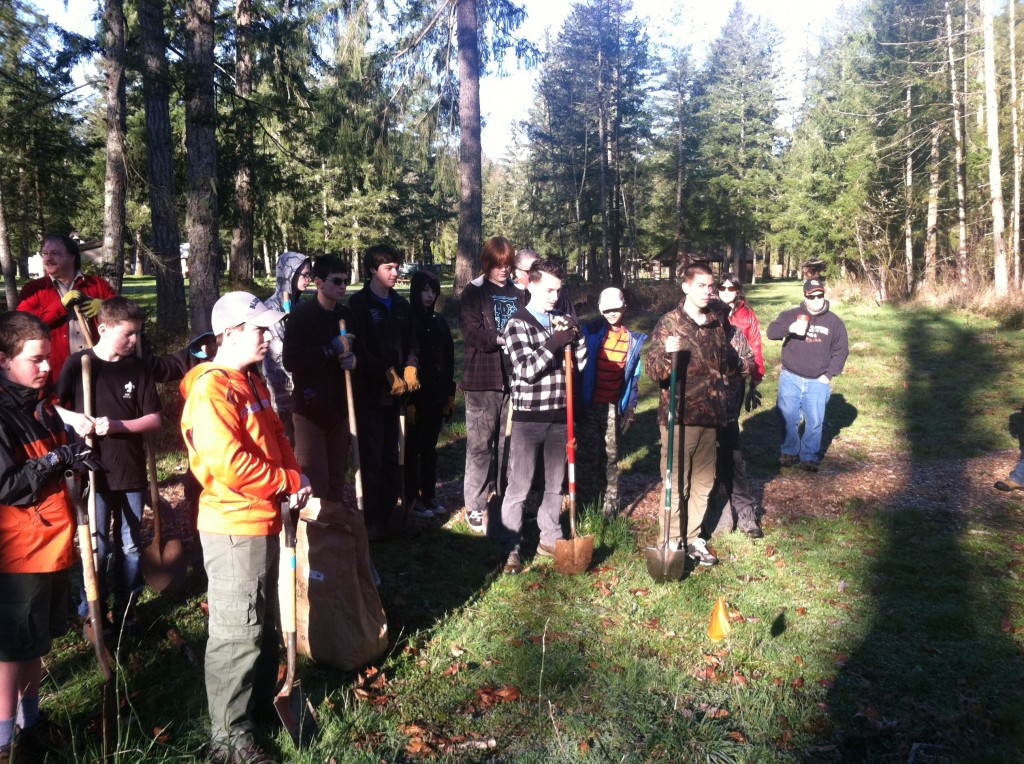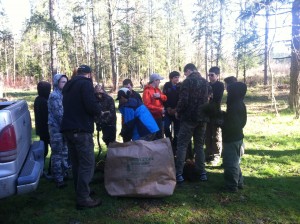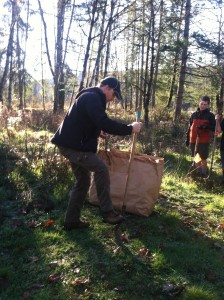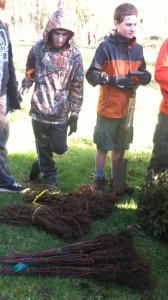Working Together to Improve Our Local Streams

By Blaylock & McCoun
According to the Oregon Department of Environmental Quality, some of our local streams and rivers are impaired due to high temperature and/or erosion. High water temperatures can contribute to increased bacteria levels, algal blooms, and poor aquatic habitat. Trees and shrubs planted along the waterways provide shade, as well as erosion control and critical wildlife habitat.
The Marion County Free Tree Program, coordinated by Keare Blaylock, is an ongoing effort to improve the quality of our local waterways. The focus of the program is to address temperature and erosion concerns by establishing native trees and shrubs for shade, habitat and bank stability along streams in Marion County. This program provided a platform to support a partnership with North Santiam Watershed Council, coordinated by Rebecca McCoun, and to provide native trees and shrubs to interested landowners.
Realizing what a wonderful opportunity this presented, McCoun contacted Scott Eden, a Resource Conservationist with the Marion Soil and Water Conservation District, and together they were able to work with eight streamside landowners interested in planting natives along the waterways running through their properties. Marion County Free Tree Program helped provide a total of 3,950 trees and shrubs from Drakes Crossing Nursery outside of Silverton. The trees and shrubs were planted along Abiqua Creek, Battle Creek, Butte Creek, Patterson Creek, Silver Creek, Weaver Gulch, the upper reaches of the Pudding River, and along the Lower North Santiam just upstream from Stayton. The landowners greatly appreciated the donated plant material and were able to select appropriate choices for their sites.
Camp Taloali, a leadership camp for the deaf, hard of hearing and Child of Deaf Adult Sibling (CODA) just east of Stayton was one of the streamside landowners who benefited from the Marion County Free Tree Program. Camp Taloali is an amazing 111 acres camp located on the banks of the Lower North Santiam. Sylvia Hall, Co-Director of Camp Taloali was excited about the opportunity to receive free plant material. Just this last summer Camp Taloali had AmeriCorps Volunteers from across the country came out and removed a large amount of Scotch Broom and other invasive species from the camp. With the invasive species removed, Hall thought it would be the perfect time to plant native species in the newly cleared areas.
With the generous help from Boy Scouts of America (BSA) Troop 592 and their parents from Raleigh Hills, Oregon, a total of 100 Ponderosa Pine, 100 Oregon grape, 200 Blue and Red Elderberry and 100 Vine Maple bare root plants were planted on Sunday February 22nd. The North Santiam Watershed Council’s Regional Project Coordinator, Lance Wyss, was able to instruct the volunteer scouts on how to lay out the planting sites based on the shade/sun requirements of the individual plants and maintenance access needs. Wyss also provided a demonstration on how to properly plant the trees and shrubs to improve their survivorship. This was the second time the BSA Troop 592 assisted Camp Taloali. In January the Troop came down from Raleigh Hills and helped cut down diseased trees and then helped haul, split and stack the wood for future campfires. The BSA Troop 592 participates in monthly service projects throughout the Willamette Valley and stated resource conservation and improvement are important values of Boy Scouting. After all the trees were planted Wyss commented on how the Camp Taloali planting project is a great example of natural resource organizations, landowners, and community volunteers working together to help improve the river systems we all rely on.
Stayton Mail Article: Working together to improve our local streams



